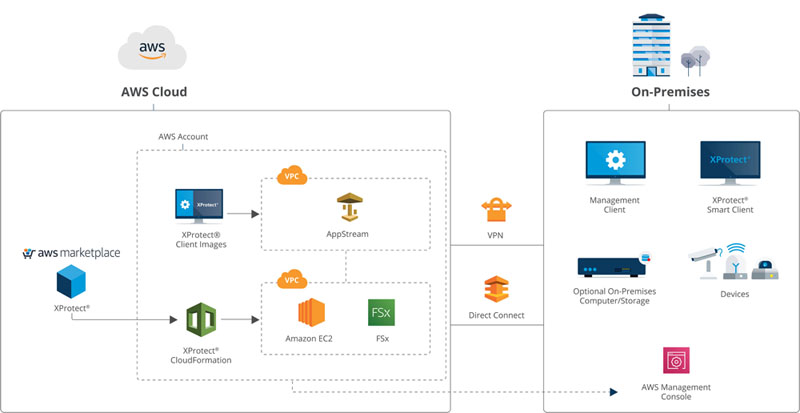An increasing number of businesses and organisations appreciate the benefits of ‘as-a-Service’ provisions. Cloud-based solutions offer a high level of flexibility, ease of implementation and configuration, and deliver enhanced functionality for the end user without incurring significant capital costs. The subscription-based model makes sense when implementing a smart service-based solution which provides a tangible return on investment.
Across the commercial and industrial sectors, an increasing number of today’s critical business and process applications and associated technologies increasingly make use of the cloud and associated services. The growth of SaaS (software as a service) is accepted by the vast majority of commercial clients as the norm. Where once businesses wanted ‘ownership’ of their systems, today they prefer a service-based offering. This enables them to exchange the labour-intensive elements of system management – maintenance, managing upgrades and investing capital in hardware and processing — for a simpler approach which is paid for via a fixed recurring subscription.
In a growing number of commercial sectors, cloud services are not only expected, but are demanded by end users. The tide of opinion and acceptability has turned very much in favour of service-based solutions for a whole raft of reasons. Fears about unreliability, high costs and fragile infrastructure have become a thing of the past. Today, the majority of businesses and organisations rely on cloud services for their core operations, so they’re unlikely to have any qualms about using the technology to protect their premises, people and assets.
However, while this widespread acceptance signals a readiness in the market for VSaaS (video surveillance as a service), it doesn’t mean any VSaaS system will be suitable for forward-thinking businesses and organisations. As with the adoption of any emerging technology, end users need to be assured the services they are investing in are robust, secure, flexible and will add value to the day-to-day business operations.
Service-based benefits
Cloud services, and especially video-based services, vary in functionality dependent upon the level of provision being offered. Video systems can be fully cloud-based, or might offer a hybrid solution, where a local hardware-based system is supplemented with additional services and/or features which are accessed via a cloud service. In some cases, the system might operate as expected on a local level, but additional features are achieved through cloud connectivity.
 It must be remembered that it’s not the cloud which is important, but the service provided! The cloud is merely the infrastructure used for delivery, a remote network which can be connected to in order to benefit from the features and functions of a video management system. It is the delivered benefits and operational performance which will give the end user a return on investment. As such, it is critical to assess how the service will add efficiencies in everyday use. If a business case can be made for the deployment of the available services, then it is vital that the provision is further investigated to ensure the end user receives the best possible outcome for their investment.
It must be remembered that it’s not the cloud which is important, but the service provided! The cloud is merely the infrastructure used for delivery, a remote network which can be connected to in order to benefit from the features and functions of a video management system. It is the delivered benefits and operational performance which will give the end user a return on investment. As such, it is critical to assess how the service will add efficiencies in everyday use. If a business case can be made for the deployment of the available services, then it is vital that the provision is further investigated to ensure the end user receives the best possible outcome for their investment.
Many integrators and end users will already be using cloud-based services across their sites, even if they are unaware of it. Many systems will offer an intuitive interface enabling users to remotely manage the basic configurations of their systems. The interface will inevitably be cloud-based. Equally, if the user receives notifications or can generate reports to share with other authorised persons, again this will usually be cloud-based.
The cloud is ideal for such purposes as a wide range of operators and users can access the information or manage system parameters without a need to interact with the core operational system. The benefits of such a solution can be enjoyed by many, but options for user error are reduced, enhancing site security.
With a growing focus on cybersecurity, cloud services also ensure any rogue users cannot interact directly with the system’s OS or software. Often, the cloud service provider will be better equipped to implement and maintain cybersecurity best practice, and can help ensure data security remains strict and compliant with any necessary standards.
Increasingly, cloud data centres use heavy duty servers with a surplus of processing power. The result is the end user enjoys the benefits of the latest technologies with a need to invest in or maintain expensive hardware. Other benefits are the hardware and software is always up-to-date, as it is all managed centrally.
It should also be remembered that as video becomes a critical part of IoT deployments, surveillance systems are no longer just for security. Site management, building automation and business intelligence benefits can all be realised, and these significantly enhance the return on investment for the end user. Many of the potential benefits make use of metadata, and a cloud environment is the perfect place to process such information, given its role in so many services.
Cloud services can analyse, share and use the real-time information gathered from metadata. This can be associated with video analytics, enabling alarm and incident reports to be shared, but the insights are not limited to security.
The Milestone option
To meet the growing demand for cloud-based video management services, Milestone is set to launch XProtect as a cloud-based service running on AWS (Amazon Web Services). This will allow users to deploy the XProtect video management system across numerous sites worldwide, with the ability to dynamically scale the functionality and system capacity on demand, with minimal hardware use and maintenance needs.
XProtect on AWS is a cloud-based VMS deployment which offers an alternative to on-premise installations. The new service will allow customers to deploy the same XProtect features and functions as the on-premise VMS in just minutes. This not only simplifies the installation and configuration processes, but also allows computational resources, storage, and networking capacity to be dynamically scaled at any time, as and when needed.
The XProtect on AWS solution leverages the inherent flexibility of cloud computing to remove the challenges involved in setting up on-premise systems, resulting in a dynamic solution which can be adapted to meet the growing needs of any business.
Benefits which users and Integrators will enjoy include the ability to access all necessary IT resources immediately, as required, with the chance to dynamically scale resources. This flexibility will also enable implementations of multi-site systems in any AWS region, including temporary sites, with no long-term contracts or commitments.
READ MORE ABOUT XPROTECT ON AWS







